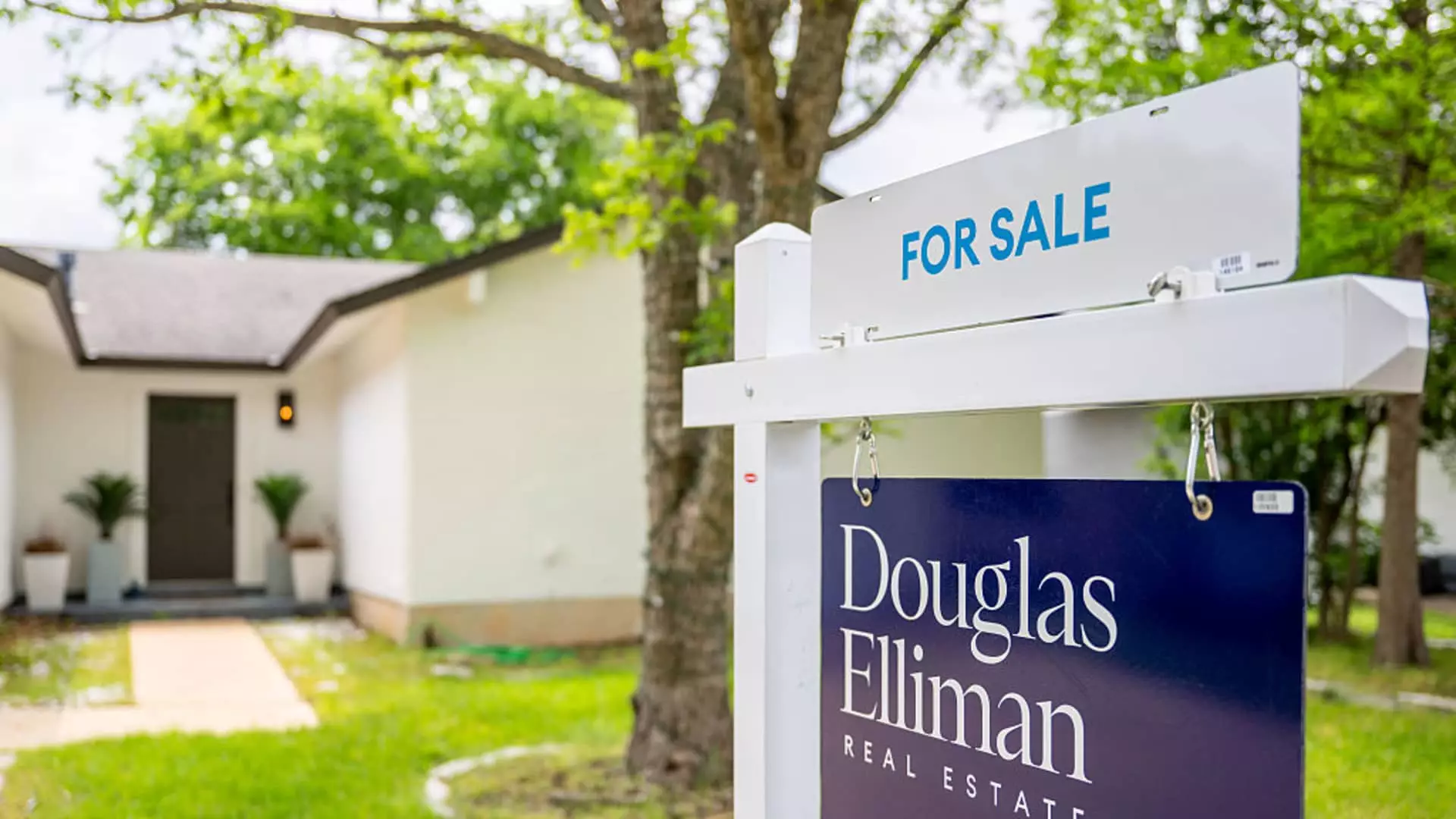The recent increase in previously owned home sales, albeit by a mere 0.8% in May, is momentarily casting a glow of optimism in an otherwise murky housing market. A seasonally adjusted annualized rate of 4.03 million units sold, according to the National Association of Realtors (NAR), is a complex figure. While it defied the predictions of a 1% decline, it still lingers 0.7% lower than the same time last year. This fact raises unsettling questions about the sustainability of this trend, which appears more like a fleeting spark than a robust upturn.
The data reveal regional disparities that add complexity to our understanding. The Northeast shows promising growth with a 4.2% increase, while the notoriously expensive West region falters by 5.4%. This unevenness in the housing market illustrates the reality that economic health is not uniform across the United States, exposing the divides that characterize our current socio-economic climate. With buyers and sellers hampered by exorbitant mortgage rates, the prospects for a genuinely revitalized market feel increasingly muted.
Mortgage Rates: The Invisible Hand Pulling the Strings
One significant factor influencing these sales figures is the fluctuating interest rates that have left many potential homeowners scratching their heads in frustration. Following a steady period, the average 30-year fixed mortgage rate shot over 7% in April, creating an environment where homeownership feels more like a distant dream. Lawrence Yun, the chief economist at NAR, pointed to this phenomenon, emphasizing that lower mortgage rates could stimulate greater activity in the housing market. However, until those rates decline, the pent-up demand stemming from strong income growth and a healthy job market will continue to simmer rather than boil over into home purchases.
The paradox lies in the growing inventory of homes available for sale, now at 1.54 million units — a jump of more than 20% from last year. Yet even as options increase, the fear of rising interest rates snares buyers in a web of indecision. As the current inventory reflects a relatively light 4.6-month supply, many still find themselves unable or unwilling to leap into the market, awaiting the elusive dip in interest rates that could make homeownership attainable once more.
Price Pressures: The Reality Beyond the Numbers
Despite the slight uptick in sales, the reality of rising home prices remains an ever-present concern. The median price in May surged to a staggering $422,800, a 1.3% increase year-over-year and a new record high for the month. This relentless escalation in home prices highlights the pressure on buyers who, even with an increase in inventory, are feeling the pinch of demand outstripping supply. An astounding 28% of homes sold recouped more than the asking price, up from 18% last month, signaling a market that continues to reward sellers while leaving buyers grappling with bitterness and uncertainty.
As we consider the dynamics at play, it’s noteworthy that the luxury market, once an outperforming segment, is also beginning to falter. Sales in the $1 million-plus range have declined when compared to last year, which reinforces the notion that economic conditions are exerting pressure across all price points. The drop particularly affects high-dollar transactions may reflect a broader shift in consumer sentiment, driven not only by rising rates but ever-present anxieties around economic stability.
The Silent Struggles of First-Time Buyers
Perhaps the most alarming element of the current housing landscape is the waning participation of first-time buyers. Composing only 30% of the market — a slight drop from 31% last year — this demographic finds itself stifled in a setting that should inherently favor new entrants. Escalating prices and unyielding mortgage rates filter them out, reducing the diversity and vibrancy of our housing ecosystems.
With 27% of all transactions being cash sales, it becomes evident that the field has tilted heavily in favor of wealthier buyers—those who can navigate the rising prices and interest rates without blinking an eye. The subsequent impact on our American Dream is incalculable. The barriers to entry are not just numbers on a chart; they represent real families facing the dream of homeownership slipping further from their grasp.
In this environment, hope flickers, but we must confront the harsh reality of an inflating market that leaves too many of us in the lurch. As we watch the future of the housing market unfold, it begs the question: will policymakers take heed and advocate for changes that prioritize accessibility and affordability, or will we continue to spiral into a cycle that paralyzes aspiring homeowners?

